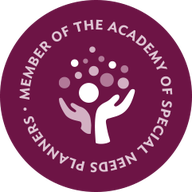Living with a disability is tough enough, but so is obtaining income support through Social Security Disability Insurance (SSDI) — especially without help from professionals who know how the system works.
About 25 percent of people who are 20 years old today will experience a disability at some point in their lives, notes a recent article in Kiplinger. Meanwhile, the lingering effects of COVID-19 — known as long COVID — have introduced another cohort of people seeking disability income.
How Likely Am I to Apply Successfully for Benefits Through SSDI?
Before the pandemic, less than 40 percent of the 2 million people who sought SSDI support each year were successful, according to the Social Security Office of Retirement and Disability. The rejection rate during the first round of applications to the Social Security Administration (SSA) is a whopping 67 percent. Among those who don’t take “no” for an answer, only 8 percent are successful in the first round of appeals, and just 2 percent succeed in round two when they take their case to a hearing.
These statistics underscore the need for professional help with the application process, experts say. Those seeking SSDI support need to know whether they even qualify to apply in the first place. You must be at least 21 years old and, for older applicants, have worked for five of the past 10 years.
Applicants must then prove that they lack the physical or mental capacity to perform substantial gainful activity (SGA) for at least one year. For that process, they need to provide paperwork documenting medical tests, surgeries, and follow-up care; visits to doctors and hospitals; and drug prescriptions. Individuals with mental health disabilities — who may not necessarily endure physical symptoms — face the added challenge of providing documentation showing how their condition affects their ability to work or carry out daily activities. They also have to provide paperwork documenting regular therapy sessions, treatment by medical professionals, and medication prescriptions.
Meanwhile, although the Department of Health and Human Services recognized long COVID as a disability in 2021, SSA may not agree when individuals use it to claim SSDI. Applicants claiming disability associated with long COVID must also jump through hoops.
Why Hire an SSDI Representative?
Successful applications depend not only on knowledge of the SSA’s demands when it comes to diseases and other health conditions, but also its detailed vocational guidelines, which take into account age and levels of education.
Those who get professional help with their applications — only three in 10 do — are 23 percent more likely to succeed, according to SSDI consultants Allsup, citing SSA statistics.
Professionals not only boost applicants’ chances of success, but they also speed up the process. Getting approval in, say, six months versus a year can mean the difference between financial survival and ruin: Between 2014 and 2019, 48,000 applicants went bankrupt waiting for their applications to be processed, according to the Government Accountability Office; between 2008 and 2019, nearly 110,000 people died while waiting for a decision. The pandemic only drew out the process even more, with the number of people awaiting a decision rising by 24 percent between 2019 and 2021.
If you are considering applying for SSDI, be sure to seek the advice and guidance from your special needs planner.
